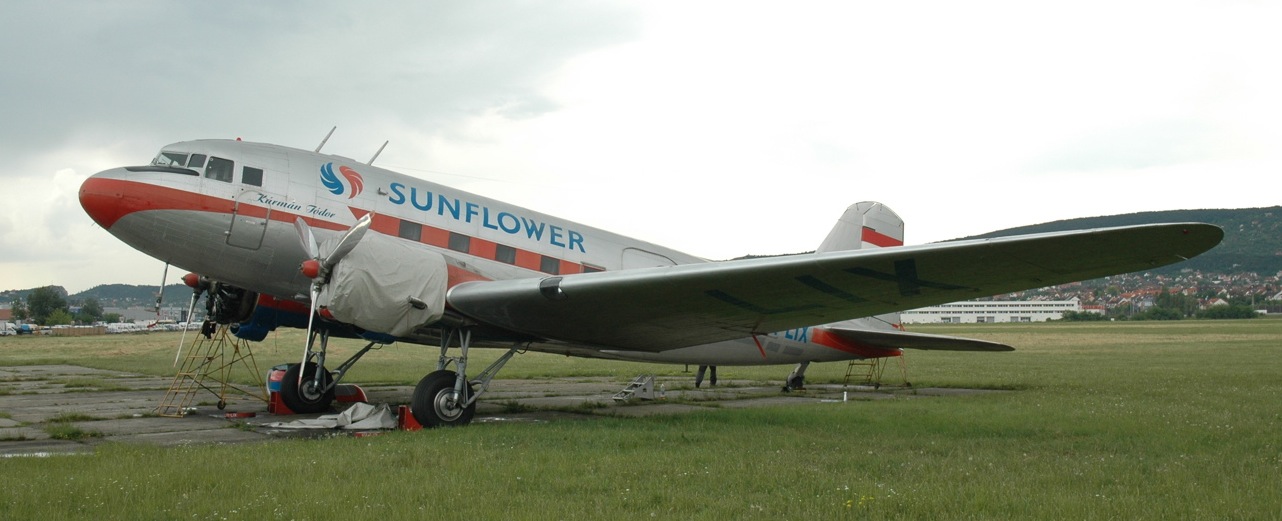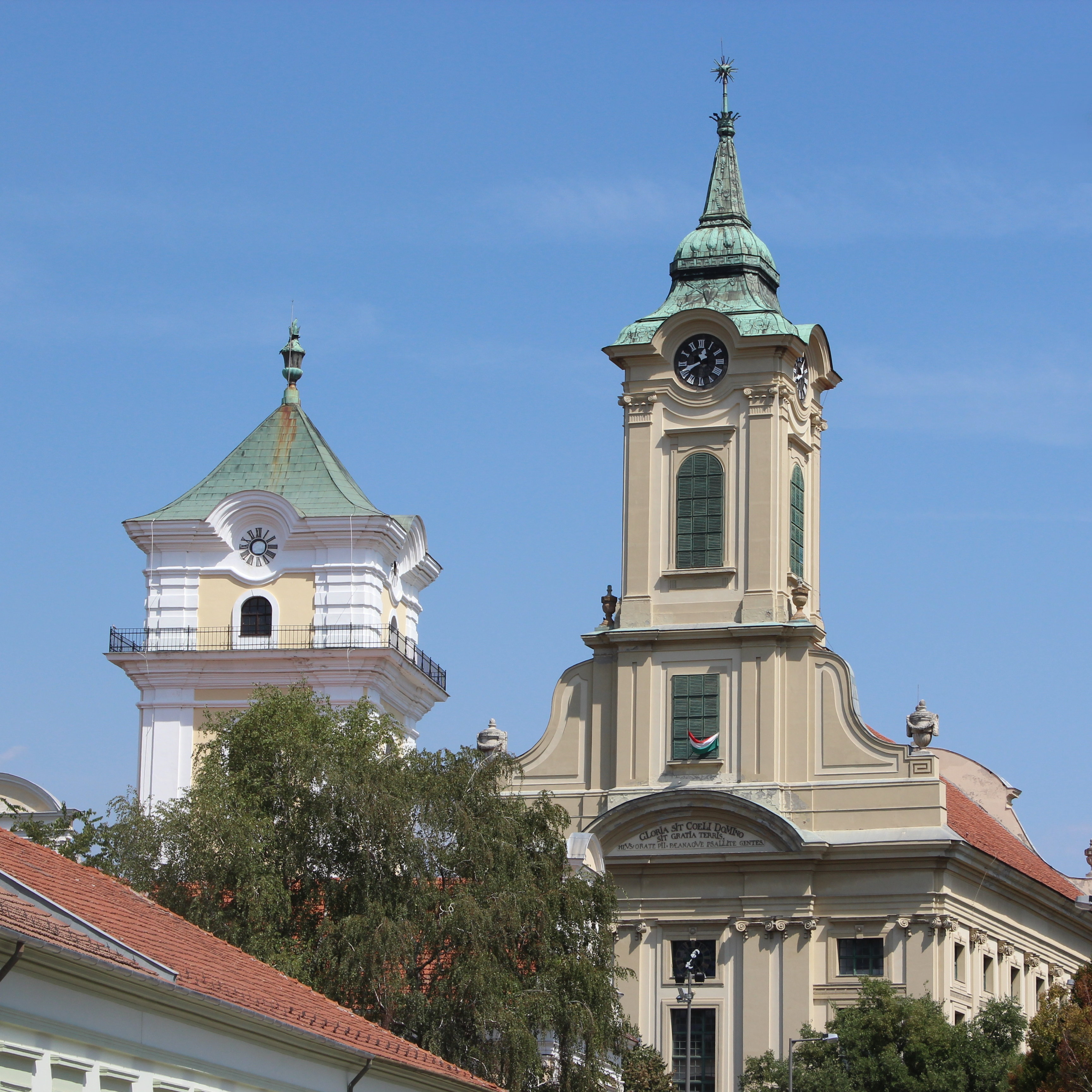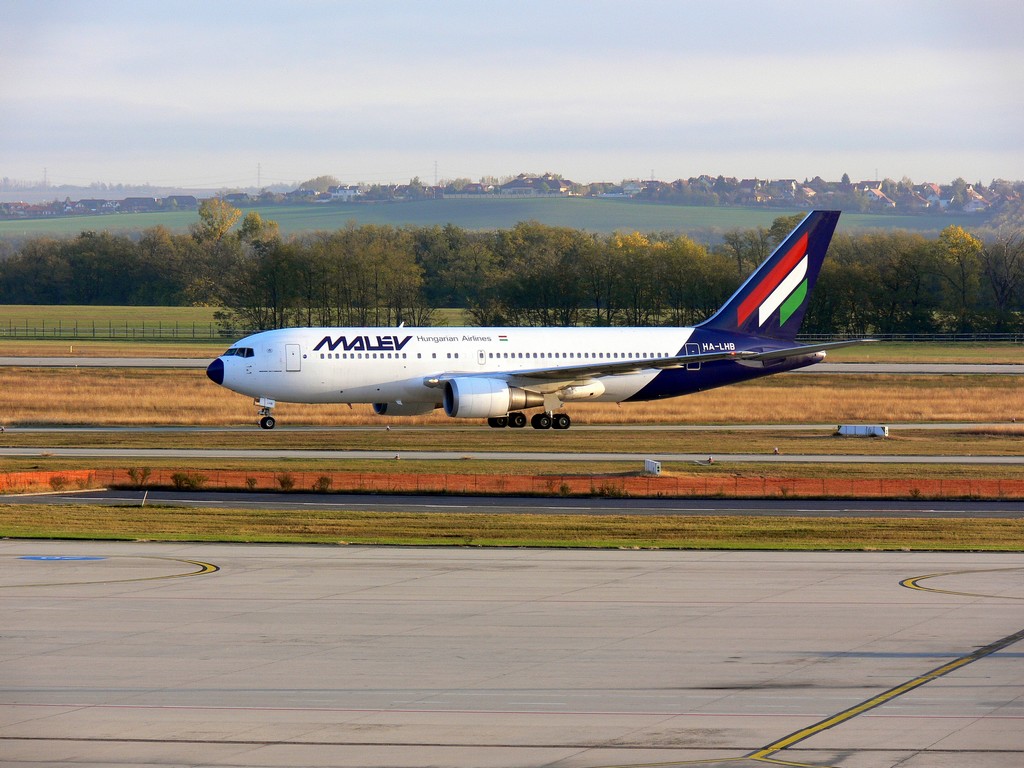|
Maszovlet
Maszovlet (short for ''Magyar–Szovjet Polgári Légiforgalmi Részvénytársaság,'' "Hungarian-Soviet Civil Air Transport Joint Stock Company") was a Hungarian airline founded on March 29, 1946. It was a predecessor of Malév. History The first Hungarian airline companies, ''Aeroexpress Rt.,'' ''Magyar Aeroforgalmi Rt.'' (Maefort) and '' Magyar Légiforgalmi Rt.'' (Malert) had to suspend operations during World War II. Maszovlet was founded after the war as the national airline of the newly Communist state, with technical assistance from the Soviet Union. The airline was jointly owned by Hungary and the USSR. In the beginning its fleet consisted of five 21-seat Lisunov Li-2 passenger aircraft (a licensed Soviet version of Douglas DC-3) and five 3-seat Po-2 plane which carried air mail. Its base was Budaörs Airport, the pre-war international airport of the country (Ferihegy airport had already been under construction but suffered severe damages during the war). Domestic flig ... [...More Info...] [...Related Items...] OR: [Wikipedia] [Google] [Baidu] |
Budaörs Airport
Budaörs Airport ( hu, Budaörsi Repülőtér), is an airport located in the 11th district of Budapest, Hungary and was named after the neighboring town Budaörs. Now serving general aviation, it was once Hungary's only international airport. History Until the opening of Budaörs, Budapest's main airport was Mátyásföld Airfield ( hu, Mátyásföld Repülőtér), east of Budapest. This was a very small airfield, and a replacement was established at Budaörs, at the south-western limit of Budapest's city boundary. Planning for the airport started in 1935, and in 1936, design competitions for the terminal and main hangar were held. Construction started the same year, and the terminal was completed in 232 days, being opened on 20 June 1937. The main architect of the terminal was Virgil Bierbauer ( hu, Virgil Borbiró), and it is considered one of his finest works. Its grand main hall was particularly noteworthy. The building still exists, but is not accessible to the publ ... [...More Info...] [...Related Items...] OR: [Wikipedia] [Google] [Baidu] |
Malert
MALÉRT (''Magyar Légiforgalmi R.T.'') was a Hungarian airline, founded on November 19, 1922. The airline merged with Aeroflot in 1944-46 into Maszovlet (''Magyar-Szovjet Légiforgalmi Társaság'') a forerunner of MALÉV Hungarian Airlines. By 1929, the airline flew regular flights connecting Budapest with Belgrade and Vienna. The main fleet before 1939 were eight triple-engined German-built Junkers Ju52/3m aircraft HA-JUA to HA-JUG, one airplane HA-DURNote that "hadúr" means "Warlord" in Hungarian (seGoogle Translate for the government, delivered between 1933–39. Five somewhat comparable triple-engined Italian-built Savoia Marchetti S.M.75 aircraft HA-SMA to HA-SME, delivered in 1938–39. And also 3 German-built Focke-Wulf Fw 58 The Focke-Wulf Fw 58 ''Weihe'' (Harrier) was a German aircraft, built to fill a request by the ''Luftwaffe'' for a multi-role aircraft, to be used as an advanced trainer for pilots, gunners and radio operators. Design and development The ... [...More Info...] [...Related Items...] OR: [Wikipedia] [Google] [Baidu] |
Lisunov Li-2
The Lisunov Li-2 (NATO reporting name: Cab), originally designated PS-84, was a license-built Soviet-version of the Douglas DC-3. It was produced by Factory #84 in Moscow-Khimki and, after evacuation in 1941, at TAPO in Tashkent. The project was directed by aeronautical engineer Boris Pavlovich Lisunov. Design and development The Soviet Union received its first DC-2 in 1935. A total of 18 DC-3s had been ordered on 11 April 1936, and the government of the USSR purchased 21 DC-3s for operation by Aeroflot before World War II. A production license was awarded to the government of the USSR on 15 July 1936. Lisunov spent two years at the Douglas Aircraft Company, between November 1936 and April 1939 translating the design. One of the engineers who accompanied him to Douglas was Vladimir Mikhailovich Myasishchev. Design work and production were undertaken at State Aviation Factory 84 in Khimki (now a suburb of Moscow). [...More Info...] [...Related Items...] OR: [Wikipedia] [Google] [Baidu] |
Békéscsaba
Békéscsaba (; sk, Békešská Čaba; see also other alternative names) is a city with county rights in southeast Hungary, the capital of Békés County. Geography Békéscsaba is located in the Great Hungarian Plain, southeast from Budapest. Highway 44, 47, Békéscsaba beltway (around the city) and Budapest-Szolnok-Békéscsaba-Lökösháza high speed () railway line also cross the city. Highway 44 is a four-lane expressway between Békéscsaba and Gyula. According to the 2011 census, the city has a total area of . Name '' Csaba'' is a popular Hungarian given name for boys of Turkic origin, while the prefix ''Békés'' refers to the county named Békés, which means peaceful in Hungarian. Other names derived from the Hungarian one include german: Tschabe, ro, Bichișciaba, and sk, Békešská Čaba. History The area has been inhabited since the ancient times. In the Iron Age the area had been conquered by the Scythians, by the Celts, then by the Huns. After th ... [...More Info...] [...Related Items...] OR: [Wikipedia] [Google] [Baidu] |
General Aviation
General aviation (GA) is defined by the International Civil Aviation Organization (ICAO) as all civil aviation aircraft operations with the exception of commercial air transport or aerial work, which is defined as specialized aviation services for other purposes. However, for statistical purposes ICAO uses a definition of general aviation which includes aerial work. General aviation thus represents the " private transport" and recreational components of aviation. Definition The International Civil Aviation Organization (ICAO) defines civil aviation aircraft operations in three categories: General Aviation (GA), Aerial Work (AW) and Commercial Air Transport (CAT). Aerial work operations are separated from general aviation by ICAO by this definition. Aerial work is when an aircraft is used for specialized services such as agriculture, construction, photography, surveying, observation and patrol, search and rescue, and aerial advertisement. However, for statistical purpo ... [...More Info...] [...Related Items...] OR: [Wikipedia] [Google] [Baidu] |
Budapest Ferenc Liszt International Airport
Budapest Ferenc Liszt International Airport ( hu, Budapest Liszt Ferenc Nemzetközi Repülőtér) , formerly known as ''Budapest Ferihegy International Airport'' and still commonly called just ''Ferihegy'', is the international airport serving the Hungarian capital city of Budapest. It is by far the largest of the country's four commercial airports, ahead of Debrecen and Hévíz–Balaton. The airport is located southeast of the center of Budapest (bordering Pest county) and was renamed in 2011 in honour of the most famous Hungarian composer Franz Liszt ( hu, Liszt Ferenc) on the occasion of the 200th anniversary of his birth. It offers international connections primarily within Europe, but also to Africa, to the Middle East, to North America and to the Far East. In 2019, the airport handled 16.2 million passengers. The airport is the headquarters and primary hub for Wizz Air and base for Ryanair. In 2012 it experienced a significant drop in aircraft movements and handled ca ... [...More Info...] [...Related Items...] OR: [Wikipedia] [Google] [Baidu] |
Bucharest
Bucharest ( , ; ro, București ) is the capital and largest city of Romania, as well as its cultural, industrial, and financial centre. It is located in the southeast of the country, on the banks of the Dâmbovița River, less than north of the Danube River and the Bulgarian border. Bucharest was first mentioned in documents in 1459. The city became the capital of Romania in 1862 and is the centre of Romanian media, culture, and art. Its architecture is a mix of historical (mostly Eclectic, but also Neoclassical and Art Nouveau), interbellum ( Bauhaus, Art Deco and Romanian Revival architecture), socialist era, and modern. In the period between the two World Wars, the city's elegant architecture and the sophistication of its elite earned Bucharest the nickname of 'Paris of the East' ( ro, Parisul Estului) or 'Little Paris' ( ro, Micul Paris). Although buildings and districts in the historic city centre were heavily damaged or destroyed by war, earthquakes, and even Ni ... [...More Info...] [...Related Items...] OR: [Wikipedia] [Google] [Baidu] |
East Berlin
East Berlin was the ''de facto'' capital city of East Germany from 1949 to 1990. Formally, it was the Soviet sector of Berlin, established in 1945. The American, British, and French sectors were known as West Berlin. From 13 August 1961 until 9 November 1989, East Berlin was separated from West Berlin by the Berlin Wall. The Western Allied powers did not recognize East Berlin as the GDR's capital, nor the GDR's authority to govern East Berlin. On 3 October 1990, the day Germany was officially reunified, East and West Berlin formally reunited as the city of Berlin. Overview With the London Protocol of 1944 signed on 12 September 1944, the United States, the United Kingdom, and the Soviet Union decided to divide Germany into three occupation zones and to establish a special area of Berlin, which was occupied by the three Allied Forces together. In May 1945, the Soviet Union installed a city government for the whole city that was called "Magistrate of Greater Berlin", whic ... [...More Info...] [...Related Items...] OR: [Wikipedia] [Google] [Baidu] |
Warsaw
Warsaw ( pl, Warszawa, ), officially the Capital City of Warsaw,, abbreviation: ''m.st. Warszawa'' is the capital and largest city of Poland. The metropolis stands on the River Vistula in east-central Poland, and its population is officially estimated at 1.86 million residents within a greater metropolitan area of 3.1 million residents, which makes Warsaw the 7th most-populous city in the European Union. The city area measures and comprises 18 districts, while the metropolitan area covers . Warsaw is an Alpha global city, a major cultural, political and economic hub, and the country's seat of government. Warsaw traces its origins to a small fishing town in Masovia. The city rose to prominence in the late 16th century, when Sigismund III decided to move the Polish capital and his royal court from Kraków. Warsaw served as the de facto capital of the Polish–Lithuanian Commonwealth until 1795, and subsequently as the seat of Napoleon's Duchy of Warsaw. Th ... [...More Info...] [...Related Items...] OR: [Wikipedia] [Google] [Baidu] |
Prague
Prague ( ; cs, Praha ; german: Prag, ; la, Praga) is the capital and largest city in the Czech Republic, and the historical capital of Bohemia. On the Vltava river, Prague is home to about 1.3 million people. The city has a temperate oceanic climate, with relatively warm summers and chilly winters. Prague is a political, cultural, and economic hub of central Europe, with a rich history and Romanesque, Gothic, Renaissance and Baroque architectures. It was the capital of the Kingdom of Bohemia and residence of several Holy Roman Emperors, most notably Charles IV (r. 1346–1378). It was an important city to the Habsburg monarchy and Austro-Hungarian Empire. The city played major roles in the Bohemian and the Protestant Reformations, the Thirty Years' War and in 20th-century history as the capital of Czechoslovakia between the World Wars and the post-war Communist era. Prague is home to a number of well-known cultural attractions, many of which survived ... [...More Info...] [...Related Items...] OR: [Wikipedia] [Google] [Baidu] |
Lake Balaton
Lake Balaton () is a freshwater lake in the Transdanubian region of Hungary. It is the largest lake in Central Europe, and one of the region's foremost tourist destinations. The Zala River provides the largest inflow of water to the lake, and the canalised Sió is the only outflow. The mountainous region of the northern shore is known both for its historic character and as a major wine region, while the flat southern shore is known for its resort towns. Balatonfüred and Hévíz developed early as resorts for the wealthy, but it was not until the late 19th century when landowners, ruined by '' Phylloxera'' attacking their grape vines, began building summer homes to rent out to the burgeoning middle classes. Name In distinction to all other Hungarian endonyms for lakes, which universally bear the suffix ''-tó'' 'lake', Lake Balaton is referred to in Hungarian with a definite article; that is, ''a Balaton'' 'the Balaton'. It was called ''lacus Pelsodis'' or ''Pelso'' by th ... [...More Info...] [...Related Items...] OR: [Wikipedia] [Google] [Baidu] |
Siófok
Siófok (; german: Fock; la, Fuk) is a town in Somogy County, Hungary on the southern bank of Lake Balaton. It is the second largest municipality in Somogy County and the seat of Siófok District. It covers an area of about 124.66 km2 (48.13 square miles) between Lake Balaton, the ''Mezőföld'' and the ''Outer Somogy-Hills''. Lying at the firth of the Sió Channel, it serves as the most important logistic station for goods between Lake Balaton and the River Danube. The town is Hungary's second most popular holiday destination (right after Budapest) thanks to its 17-kilometre-long (11 miles) coast, over 1,000 hotels, and plenty of bars, restaurants and night clubs. Siófok is one of the richest municipalities of Hungary due to tourism. Hungarians often call the town "the capital of Lake Balaton", as it is the largest town on its shores and acts as the financial, cultural, media, commercial and touristic hub of the northern part of Somogy County and the southern shore o ... [...More Info...] [...Related Items...] OR: [Wikipedia] [Google] [Baidu] |



.jpg)



.jpg)
